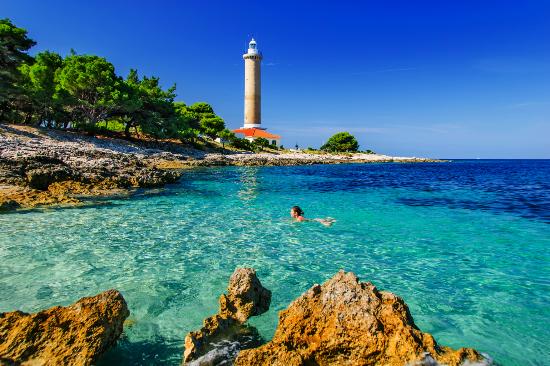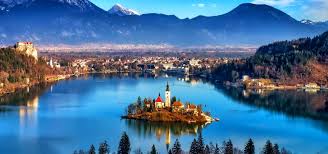Did you know that the necktie and ballpoint pen originated from Croatia? Or that Dalmatian dogs are named after the coastal region in the south of the country? I decided to do a road trip around Croatia with my friends Yong Qian and Abbas since it was our one week vacation in France. We rented a car which offered us much convenience to drive between cities at our own leisurely pace and we also crossed the border to visit Bosnia and Herzegovina as well.

We landed in Split after flying from Geneva. Split is a historic city along the Adriatic Sea and surrounds the ancient roman palace of the emperor Diocletian. Thanks to our walking tour guide, we would remember for life the Diocletian palace named after the emperor and that it was built in 305AD, yet standing strong till now, a marvel of architecture by the Romans. The second largest city in Croatia was never attacked by other countries thanks to strong defense from the Venetian empire and you can observe traces of their influence in terms of the numerous gelato shops and Venetian windows in buildings as well. Do try the seafood here which is freshly caught from the sea, although the restaurant we went to was not exactly up to standard and their fried calamari was too oily.

Next up, we drove along the scenic coastal route to Dubrovnik. The drive along the coastline was magnificent, passing by mountain ranges, gorgeous blue sea and charming coastal villages. We had to pass by a Bosnian town (Neum) which meant passport control and after 20 minutes, we would exit Bosnia and be back in Croatia again. This is because a small piece of the coast belongs to BiH territory. Dubrovnik is indeed the ‘pearl of the Adriatic’ as the panoramic views over the sea are just spectacular. The well preserved city walls which surround the old town were built during the 10th century and fortified in 1453; they are 3m thick along the sea and 6m thick inland, thus making the city almost impenetrable. You could enter the old city walls and walk along the top of the walls with an admission charge, but we chose to hike up a small hill that offered us parallel views of the city from a much higher viewpoint. An alternative would be to take a funicular up the hill (return trip costs 13€).

After 3 days of perfect sunny weather along the coastal cities, we headed to Plitvice national park. It is the largest and most visited national park in Croatia which is also a unesco world heritage site. The lakes are famous for their cascades and deep turquoise colours, but unfortunately it was a cloudy day when we visited so the pictures did not do the lakes justice. There are many different species of flora and fauna in the park which contributes to the diversity of plitvice. It was a pity that we only had half a day to explore the lakes, if not we could have done some hiking. There was a boat and tram ride which is included in the ticket price, so if you are exhausted from walking you could use these as an alternative. After plitvice, I parted ways with my 2 travel buddies as they flew back to London while I had another 2 days to spare before my flight, so I traveled to Slovenia (review in another note).

Zagreb, a political hub from medieval times, is the capital of Croatia. However, I got an impression that this pocket-sized capital city is too relaxed, it seems like nobody works in this town. Probably because I visited Zagreb on all saints day, hence most of the shops were closed. The museum of broken relationships sounds interesting from the name itself, but too bad it was closed for the public holiday. Zagreb is not exactly a fascinating city, as most people use it as a train or bus hub to coastal cities such as Dubrovnik or Split. I took a 3h bus ride to Zadar where I caught my flight to London. Having not enough Croatian kuna to make my way to the airport, I hitchhiked my way and I was so lucky to have met this Zadar guy who made a detour and drove me all the way to the airport despite living just 1km from where he picked me up. This marks the end of my adventures in Croatia.









